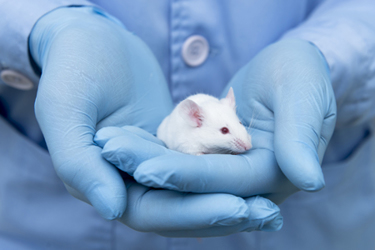What's True Of Mice ≠ What's True Of Men

By Matthew Pillar, Editor, Bioprocess Online

This article originally appeared in the October, 2022 edition of Life Science Leader magazine.
Back in 2001, Alex Blyth was tasked with launching a med tech practice at Cambridge Consultants. A year into the job, he found himself suffering imposter syndrome. He was 22 years old, leading a sizable team of life science Ph.D.s., yet he had no academic life sciences training. So, he went back to college and earned a degree in biology. That kind of roll-up-your-sleeves problem-solving wove throughout my conversation with Blyth on episode 105 of the Business of Biotech podcast.
Bootstrapping An Immuno-Oncology Startup

The company’s preclinical Neutrophil Only Leukocyte Infusion Therapy (N-LIfT) is an allogeneic innate cell therapy that, in an FDA-approved safety trial, demonstrated up to 80% tumor necrosis in late-stage carcinoma patients. The company is banking on the potential to build a cell bank of an N1a neutrophil that demonstrates cancer killing and immune recruitment capabilities, subsequently destroying all solid tumors irrespective of mutation or strain. N-LIfT also has shown 100% efficacy in mouse models, but Blyth doesn’t like mouse models. Which leads us to his current crusade.
Addressing The Much-Maligned Mouse Model
Ironically, the inspiration for N-LIfT was realized in mouse research, when adoptive transfer of neutrophil progenitor cells was proven to work in mice. But to get into the clinic and file an IND, the FDA requires a mouse in vivo model that demonstrates the cell’s fate in the mouse — how long it lasts, where it goes, and its toxicity. That’s not a problem for Blyth, but that’s where his appreciation for the role of mice in regulatory requirements ends. “Our cytotoxic alpha neutrophils don’t attack healthy tissue, whether in a mouse or a human, so that’s not a problem,” he says. “But demonstrating efficacy in a mouse really is a problem because we’re not trying to cure cancer in a mouse with human cells. We’re trying to cure it in a human. And when you put human cells in a mouse, they don’t know what they’re doing. They don’t get the right chemokines and growth factors to mature into activated neutrophils. They don’t do such a great job as they would do in a human, so it’s actually harder for us to get results in a mouse than in a human.” That turns on its head the longheld notion that it’s easier to cure cancer in a mouse with small molecules or antibodies than it is in a human. “With cell therapies it’s different, because the cells are really not comfortable in the mouse. The mouse is not a very good model for a human being.” Blyth points to data to support his claim. “The ability of a mouse model to predict clinical response in a human clinical trial is 8.5%. That’s incredibly poor.”
Instead, Blyth is a proponent of organoid technology, which utilizes real tumors taken from real patients. “We’ve found that the organoid model’s predictive power in solid tumors is 80% to 90%,” he says. “When it comes to judging the efficacy of a therapy and the cost/benefit of an IND filing and clinical trials, this should be the focus going forward, particularly in innate cell therapies.” In effect, he says, you’re testing your drug product directly on the tumor without putting the rest of the patient at risk, a seeming fitting way of testing something prior to its administration into a patient. Blyth says the organoid model is also a boon to the selection of clinical trial participants. “If you can run an organoid model of your patient’s tumor and test your drug against it, you can make an informed decision about whether or not to go into that patient based on the outcome.”
Blyth isn’t alone in his crusade. In fact, heavyweights such as Merck (with which LIfT is partnering) and AstraZeneca are phasing animal models out and organoid/tumoroid models in, albeit slowly as the technology advances. For its part, the FDA is paddling in the same direction, having launched the Alternative Methods Working Group. While the group doesn’t produce official regulatory guidance, it’s anticipated that the work it’s doing will inform change in animal testing requirements for IND filings in the future.
Learn more about Blyth and his many crusades on episode 105 of the Business of Biotech.
